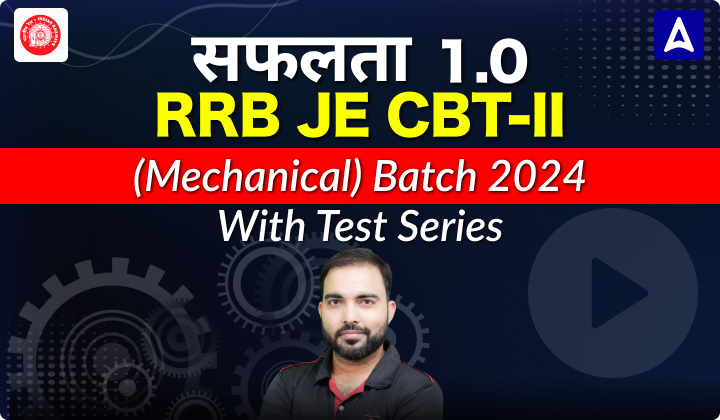Know your strengths and practice your concepts with this quiz on UPSSSC-JE Recruitment 2021. This quiz for UPSSSC-JE Recruitment 2021 is designed specially according to UPSSSC-JE Syllabus 2021.
Quiz: Civil Engineering
Exam: UPSSSC-JE
Topic: MISCELLANEOUS
Each question carries 1 mark
Negative marking: 1/4 mark
Time: 8 Minutes
Q1. Water emerges from an ogee spillway with velocity = 13.72 m/s and depth = 0.3 m at its toe. The tail water depth required to from a hydraulic jump at the toe is
(a) 6.48 m
(b) 5.24 m
(c) 3.24 m
(d) 2.24 m
Q2. The ordinate of the instantaneous Unit Hydrograph (IUH) of a catchment at any time t, is
(a) the slope of the 1 hour unit hydrograph at that time
(b) the slope of the direct runoff unit hydrograph at that time
(c) difference in the slope of the S curve and 1 hour unit hydrograph
(d) the slope of the S curve with effective rainfall intensity of 1 cm/hr
Q3. In a river, discharge is 173 m³/s; water surface slope is 1 in 6000; and stage at the gauge station is 10.0 m. If during a flood, the stage at the gauge station is same and the water surface slope is 1 in 2000, the flood discharge in m³/s, is approximately
(a) 371
(b) 100
(c) 519
(d) 300
Q4. Bligh’s Creep theory of seepage assumes
(a) Loss of head follows a sine curve
(b) More weightage to horizontal creep than vertical creep
(c) Less weightage to horizontal creep than vertical creep
(d) Equal weightage to horizontal and vertical creep
Q5. The moisture content of the soil, after free drainage has removed most of the gravity water, is called
(a) Available moisture
(b) Saturation capacity
(c) Field capacity
(d) Gravity water
Q6. A summit curve is formed at the intersection of a 3% upgrade and a 5% downgrade what is the length of the summit curve in order to provide a stopping distance of 130 m.
(a) 271 m
(b) 298 m
(c) 307 m
(d) 340 m
SOLUTION
S1. Ans.(c)
Sol. Water depth required to form a hydraulic Jump
Y_2=(Y₁)/2 [-1+√(1+(8V₁²)/(gy₁))]
=0.3/2×[-1+√(1+(8×(13.72)²)/(9.81×0.3))]
= 3.24 m.
S2. Ans.(d)
Sol. The ordinate of one Instantaneous unit hydrograph at any time ‘t’ is the slope of s – curve of intensity 1 cm/hr.
S3. Ans.(d)
Sol. Q₁ = 173 m³/sec
S₁ = 1 in 6000
S₂ = 1 in 2000
Q₂ = ?
(By manning^’ eq^n)/(Q=1/n AR^(2/3) S^(1/2) )
Q ∝√S
Q_1/Q_2 =√((S₁)/(S₂))
173/Q_2 =√((1/6000)/(1/2000))
▭(Q_2=299.64≈300 m^3/sec)
S4. Ans.(d)
Sol. Bligh’s creep theory of seepage assumes equal weightage to horizontal creep and vertical creep. According to this theory the seepage water follows outline of the base of structure.
S5. Ans.(c)
Sol. The moisture content of the soil, after free drainage has removed most of the gravity water, is called field capacity.
S6. Ans.(c)
Sol. Deviation angle = N = 3 + 5= 8% = 0.08
Assuming L > S
L = (NS^2)/4.4=(0.08×(130)^2)/4.4
= 307.2 m ≃ 307 m


 C DAC Noida Recruitment 2024 Out, Apply ...
C DAC Noida Recruitment 2024 Out, Apply ...
 RRB JE Admit Card 2024 @indianrailways.g...
RRB JE Admit Card 2024 @indianrailways.g...
 NMDC JOT Admit Card 2024, Direct Link to...
NMDC JOT Admit Card 2024, Direct Link to...











